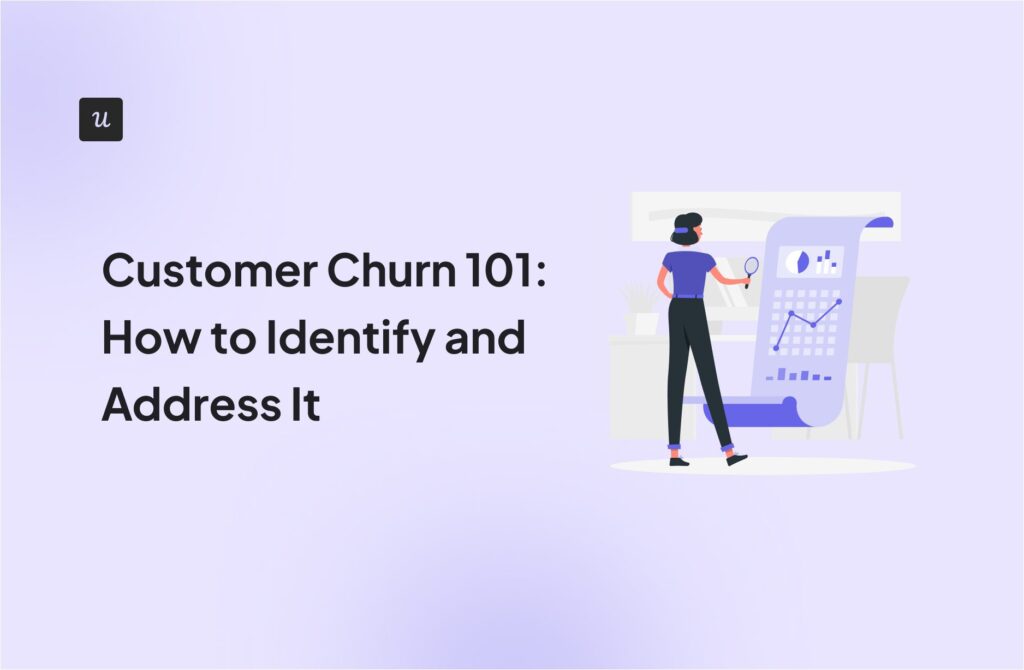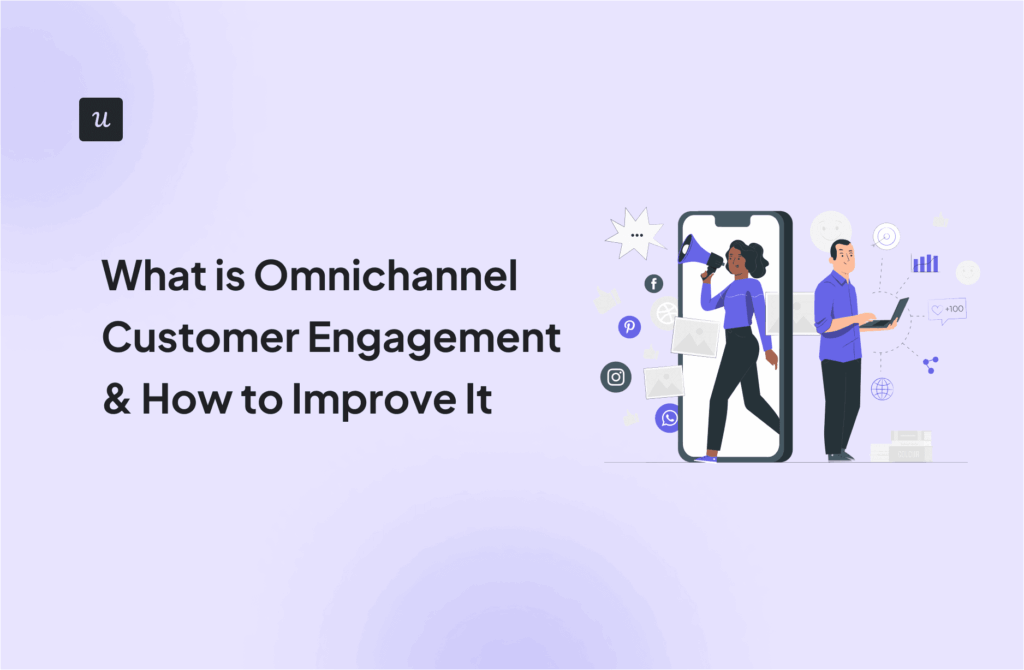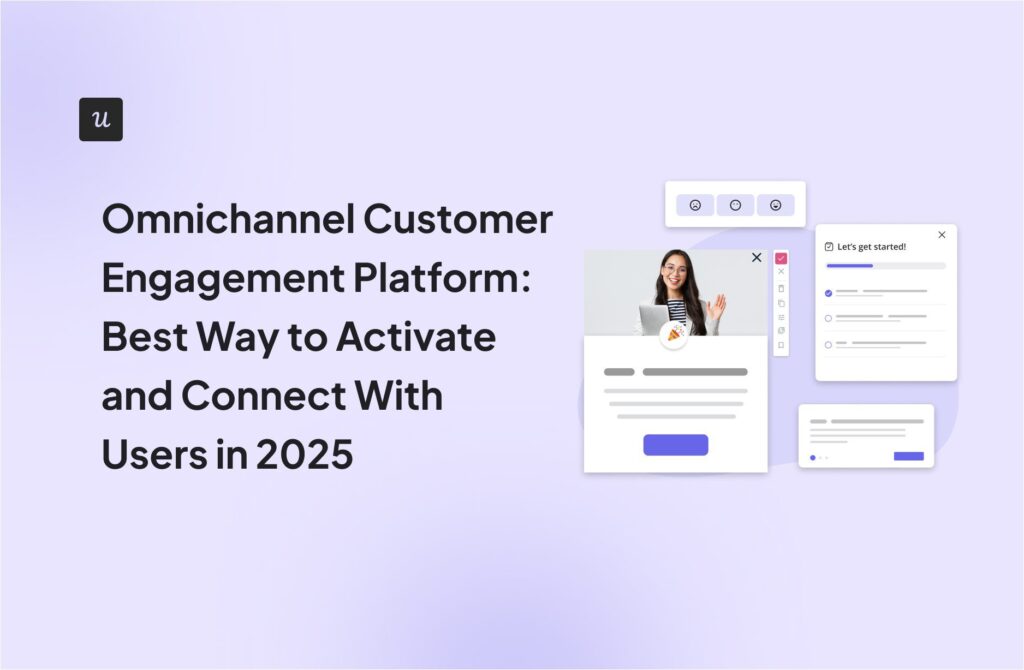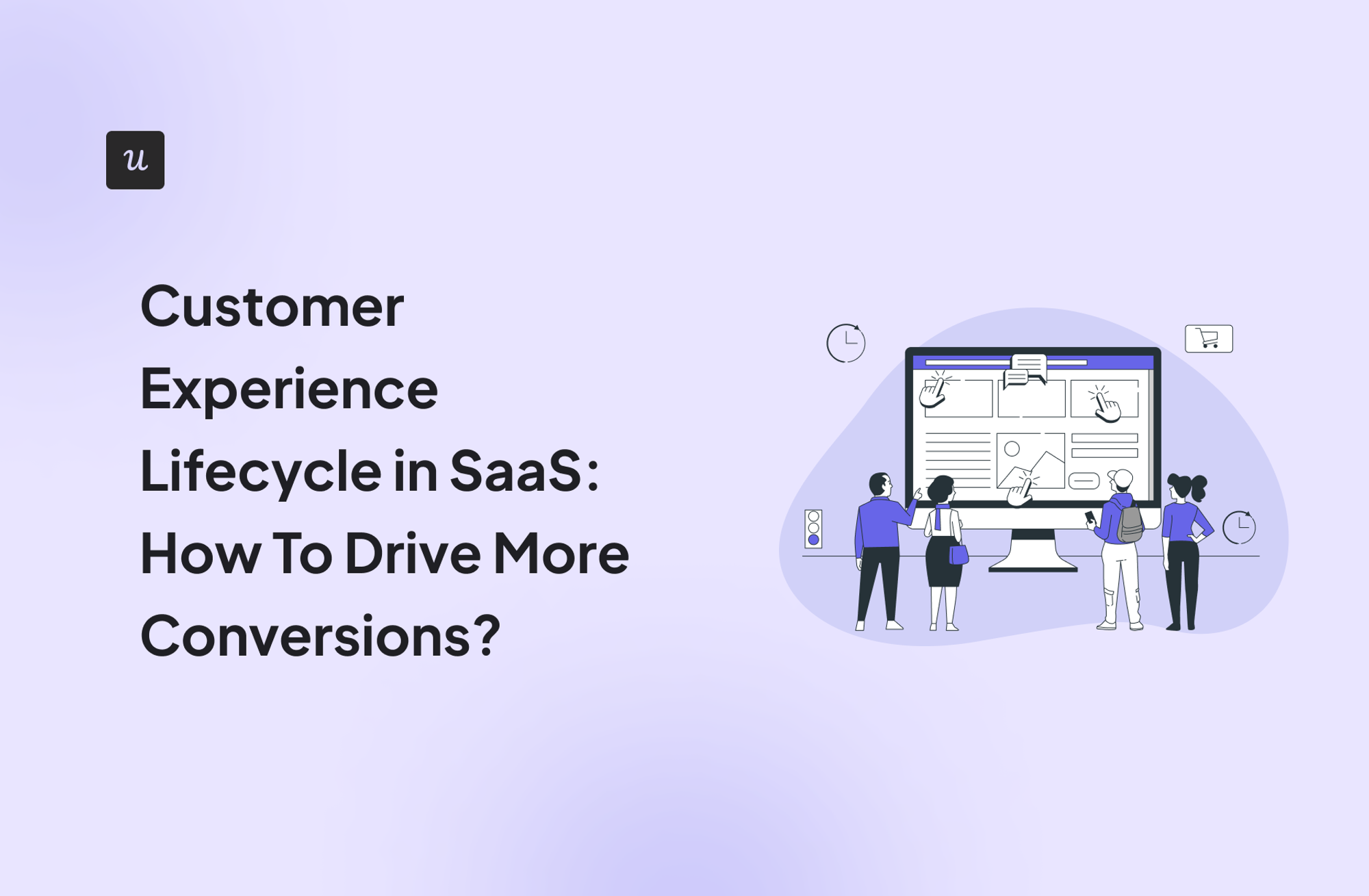
Customer Experience Lifecycle in SaaS: How To Drive More Conversions?
The customer experience lifecycle paints the complete picture of a customer’s interaction with your brand.
Optimizing experiences throughout this cycle increases engagement and customer lifetime value.
In this article, we’ll explore the following:
- What the customer lifecycle is and why it’s important.
- The five stages of the customer lifecycle.
- Lifecycle management strategies for every stage in the customer journey.
Let’s get started.
Get The Insights!
The fastest way to learn about Product Growth, Management & Trends.
Summary of the customer experience lifecycle
- The customer experience lifecycle covers all the interactions a customer has with a product during the customer journey.
- The customer lifecycle is different from the customer journey. The experience lifecycle describes how a customer feels as they move through the different stages of their journey with a business.
- There are five different customer lifecycle stages – reach, acquisition, conversion, retention, and loyalty.
- The reach stage of the customer journey describes the moment customers first hear about your business.
- The acquisition stage is when customers sign up for a product or service for the first time. In SaaS, this is usually the moment they start a free trial or freemium plan.
- The conversion stage happens when a customer buys from the business for the first time. In SaaS, it’s when they upgrade from a free trial to paid, or from a freemium to a premium plan.
- In the retention stage, customers stick around for multiple payment cycles without canceling their accounts. They’ve recognized the value of the product or service at this point.
- Finally, the loyalty stage happens when happy customers refer new people to the product since they’re so pleased with it.
- Customer lifecycle management improves the customer experience and increases product success.
- To increase success in the reach stage, define your target user personas and share informative, relevant content.
- To improve customer acquisition, showcase your product with live demos, offer free trials or freemium plans, and remove friction from the signup flow.
- To ensure more customers move through the conversion funnel, you need to:
- Use concise onboarding checklists to activate users faster.
- Shorten the learning curve with interactive walkthroughs and help users adopt features without friction.
- Embrace the product-led reverse trial approach: give freemium users access to premium features for a limited time and allow them to experience the added value firsthand.
- To make sure existing customers are sticking around, you can:
- Look into product usage analytics and understand what’s driving customer loyalty. Then, replicate their paths and drive the rest of your user base to success.
- Offer continuous support and education with an in-app resource center.
- Collect customer feedback to address issues that prevent customers from becoming repeat buyers and advocates.
- Finally, to increase your loyal customer base, implement the following strategies:
- Celebrate customer success and create stronger emotional bonds with customers. You can use gamified elements like celebratory modals, and badges, certificates.
- Implement loyalty and referral programs that incentivize long-term relationships
- If your customers reach the loyalty stage, encourage customers with high satisfaction to leave reviews on 3rd party platforms. Social proof does wonders for your company.
- Userpilot helps SaaS companies manage the customer lifecycle to increase free trial to paid conversion, improve user experience, and boost retention. Book a demo now to learn more.
What is the customer experience lifecycle?
The customer experience lifecycle is the journey customers take during their entire relationship with your brand. It typically spans five or more stages – reach, acquisition, conversion, retention, and loyalty.
Customer experience lifecycle vs customer journey
The customer journey describes the stages people go through when interacting with your brand. It can be visualized with a customer journey map.
Moreover, the customer journey has a beginning and an end while the customer lifecycle is an ongoing process. The cycle continues as the customer moves from stage to stage, sometimes dropping out at different points and starting over.
What are the customer experience lifecycle stages?
Customer lifecycle stages describe the steps a customer takes from learning about your company to making their first purchase and beyond.
These are the five stages of the customer lifecycle.
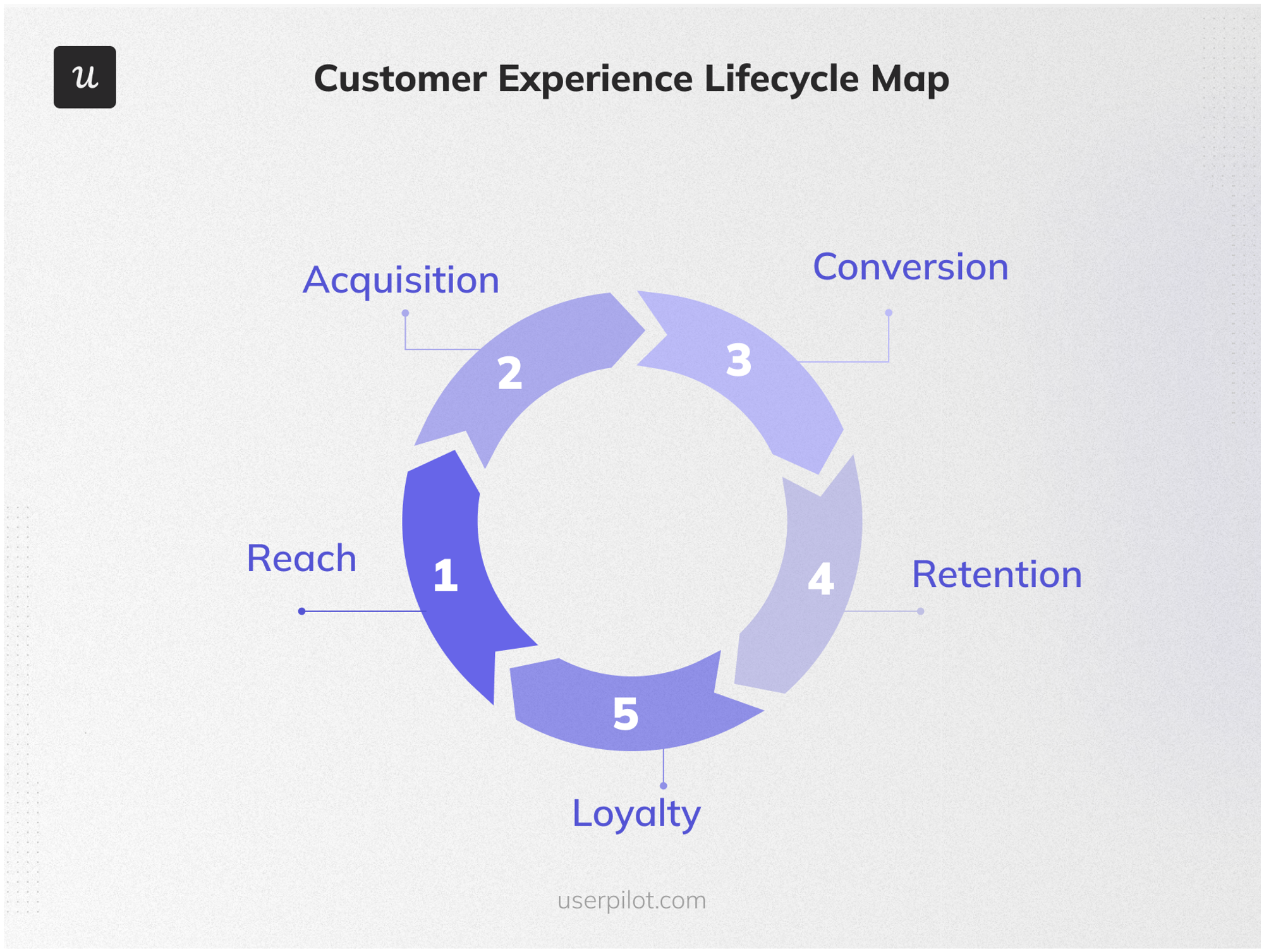
1. Reach stage
In the reach stage, your target audience first becomes aware of your business. They recognize your brand as a potential solution to their problem or a goal they want to achieve. People browse educational content to compare products or services. This leads to a purchase decision.
2. Acquisition
The acquisition process (or the purchase stage) is when potential customers make their first purchase from your brand. If you’re a SaaS business, this is when customers sign up for a free trial or the freemium version of your product.
3. Conversion
In the conversion stage, customers convert from free trial to paid plans or upgrade from freemium to premium. They’ve seen the value of your product and are ready to pay for it.
4. Retention
In the retention stage, customers have stayed with the business for some time. Customers feel that the value of the product or service is worth the price. If it’s a subscription business, they keep renewing their plan.
5. Loyalty
Loyalty is the final stage of the customer experience lifecycle model (also called the advocacy stage). Loyal customers have built a positive relationship with the company and are now referring new business to the company.
Customer experience lifecycle management strategies for the reach stage
To get more customers into your sales funnel, here are two lifecycle management strategies you can try.
Define your target user personas
Use user persona templates to define your ideal customer, their pain points, and their goals.
Then, create marketing and sales content, such as blog posts or social media campaigns, that speak to those concerns.
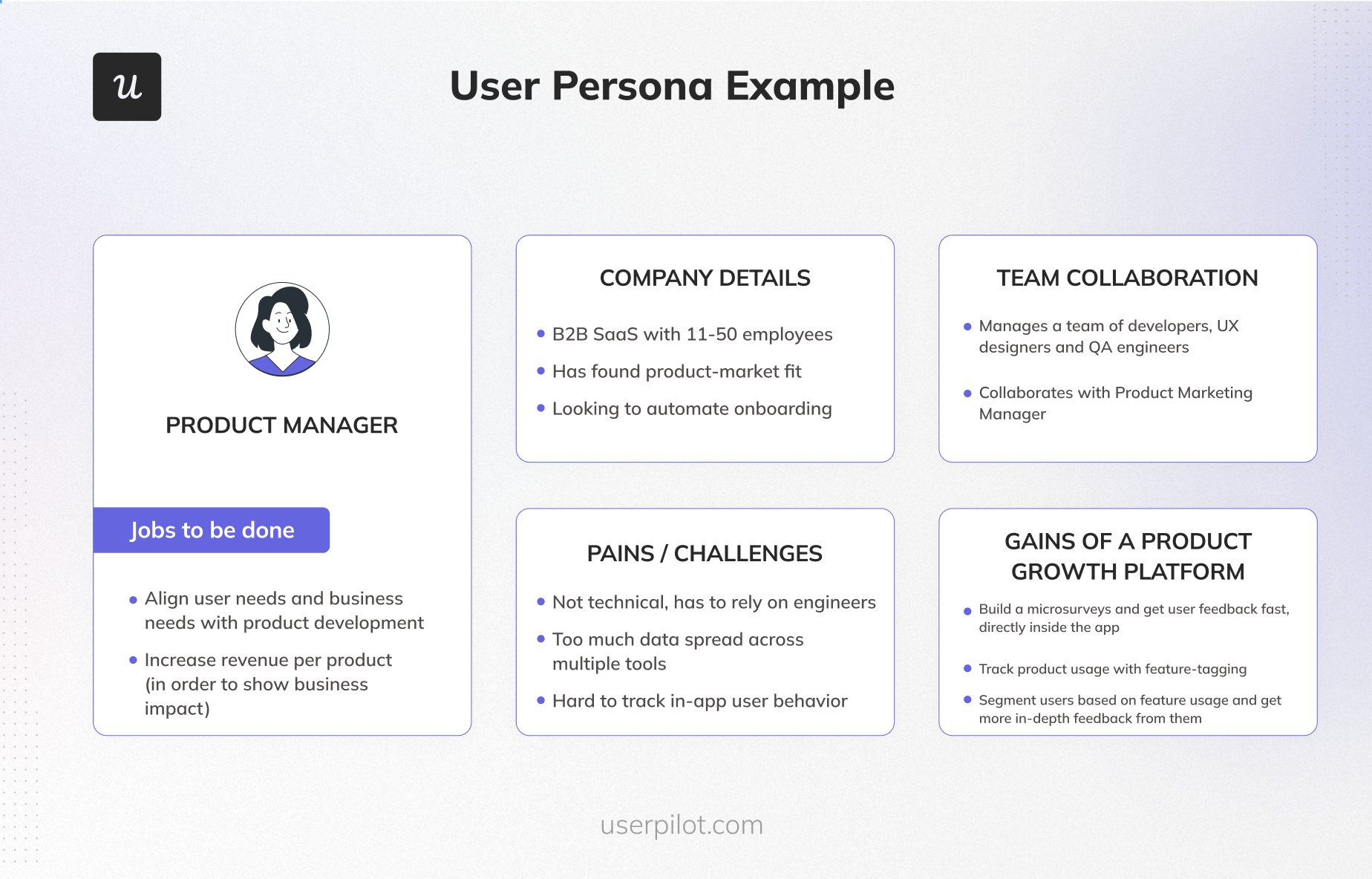
Share informative and relevant content
Engage with customers on social media platforms. Ask them questions, listen to what they’re saying about your industry, and stay updated on the big picture.
Share useful and engaging content on social media that’s not always sales-focused. Education should be the biggest priority in the reach stage.
Customer experience lifecycle management strategies for the acquisition stage
The acquisition stage in SaaS is a bit different than a typical B2B company. This is because the sales cycles are longer, starting with a trial or demo.
In the product-led growth model, companies use the product as the main driver of acquisition. They offer freemium accounts, demos, or trials to showcase the product’s value. Here’s a look at some of the strategies that make this possible.
Showcase your product with live demos and webinars
Use live demos and product webinars to connect with customers and showcase your product’s value. Help them get to the “aha” moment faster by demonstrating how the product can be used in the context of their goals.
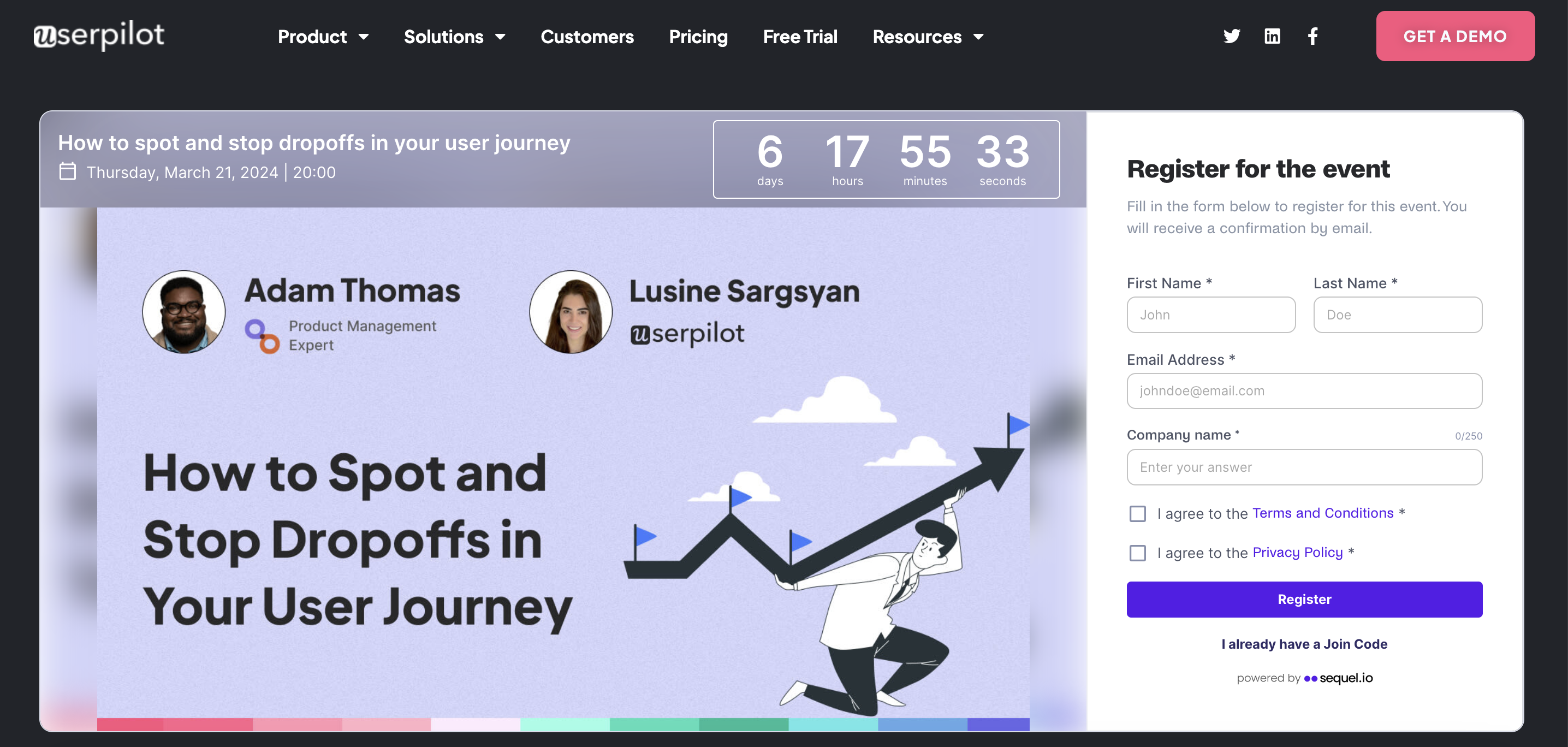
Offer free trials and freemiums to potential customers
Demos work great for products with a steeper learning curve. On the other hand, if your product is easy to use and intuitive, offer a free trial or freemium account to increase acquisition.
You can consider using paid trials to qualify leads. For example, you can ask customers to pay a small amount to use the product for a week or two before committing to the full plan.
If you’re going with the freemium pricing model, make sure your freemium plan offers just enough value, but not too much that the user won’t feel the need to upgrade.
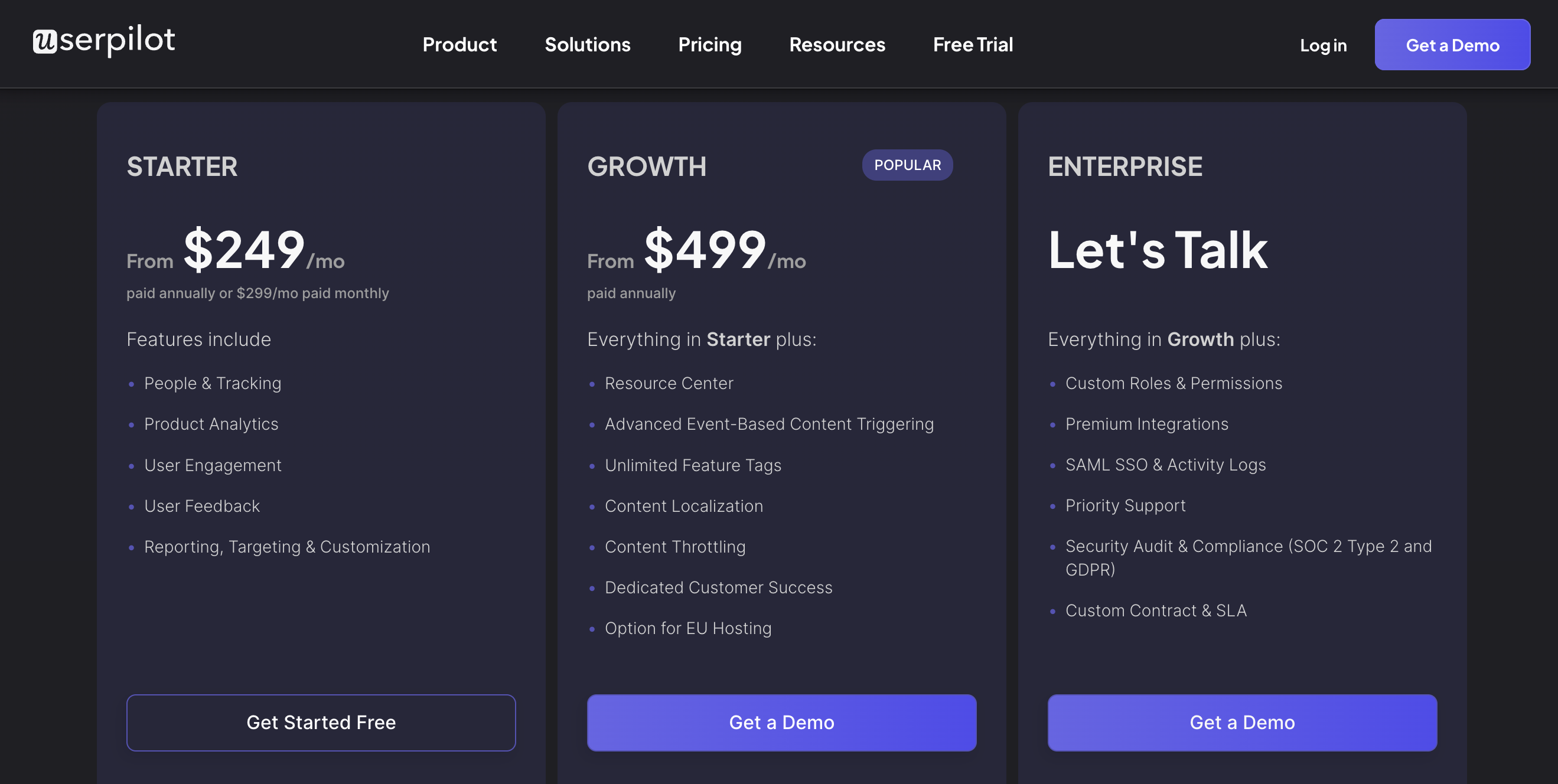
Remove friction from the sign-up flow
Remove unnecessary steps from the sign-up flow so users can get into the product easily.
To do this, provide short sign-up forms along with single sign-on options.
While collecting information is critical to delivering personalized content during the customer experience, don’t bombard users with too many fields to fill out. You can always collect more data with microsurveys in the later stages of the onboarding process.
You can also reduce the barrier to entry by skipping credit card information.
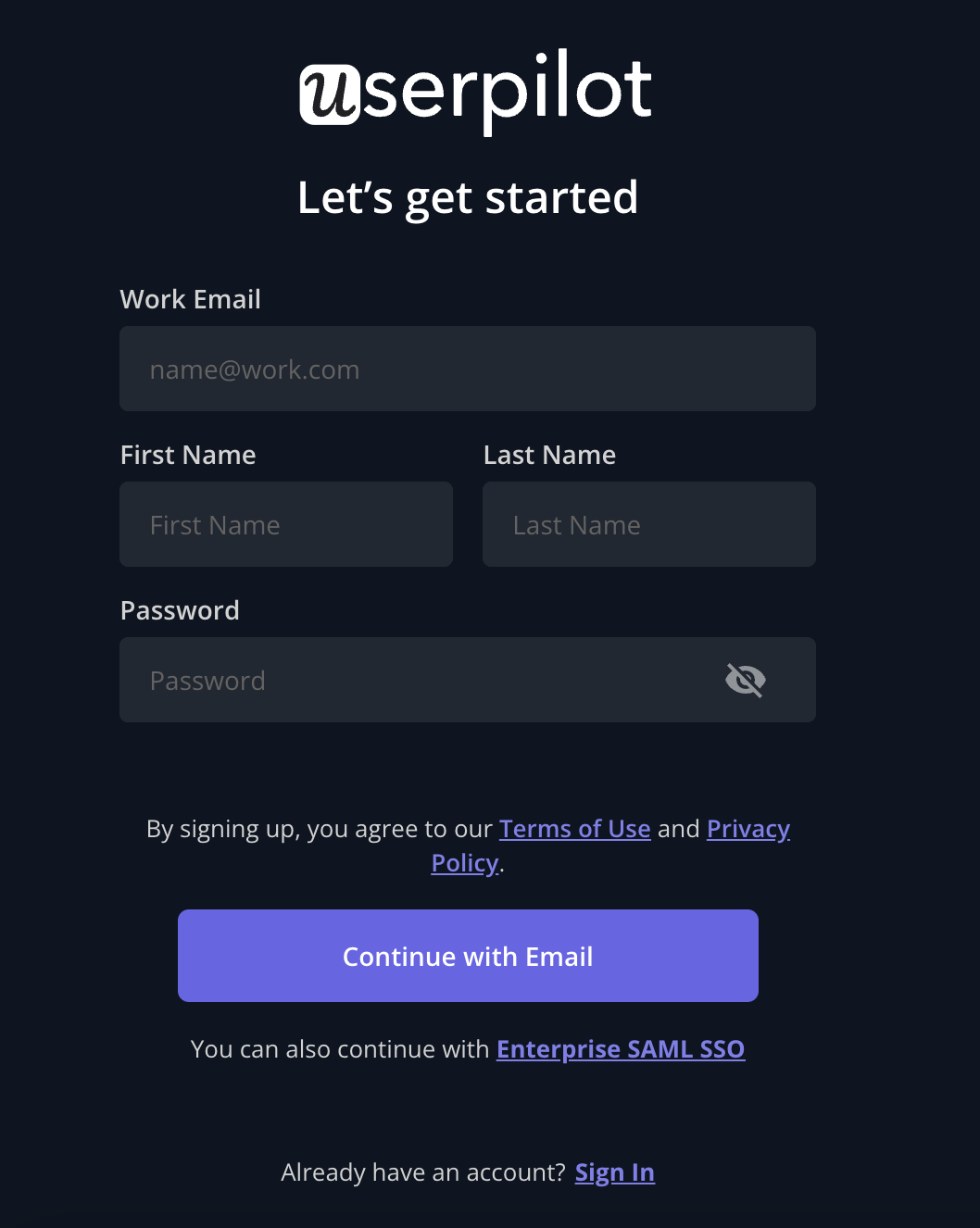
Customer lifecycle management strategies for the conversion stage
Here are three strategies to support customers nearing the conversion stage.
Activate users and get them to experience the promised value
Users won’t convert if they don’t perform value-driven actions.
Use checklists to prompt users to engage with the right features for their use case. These are features that will help them get started with your app. That way, customers reach activation faster and see the value of your product.
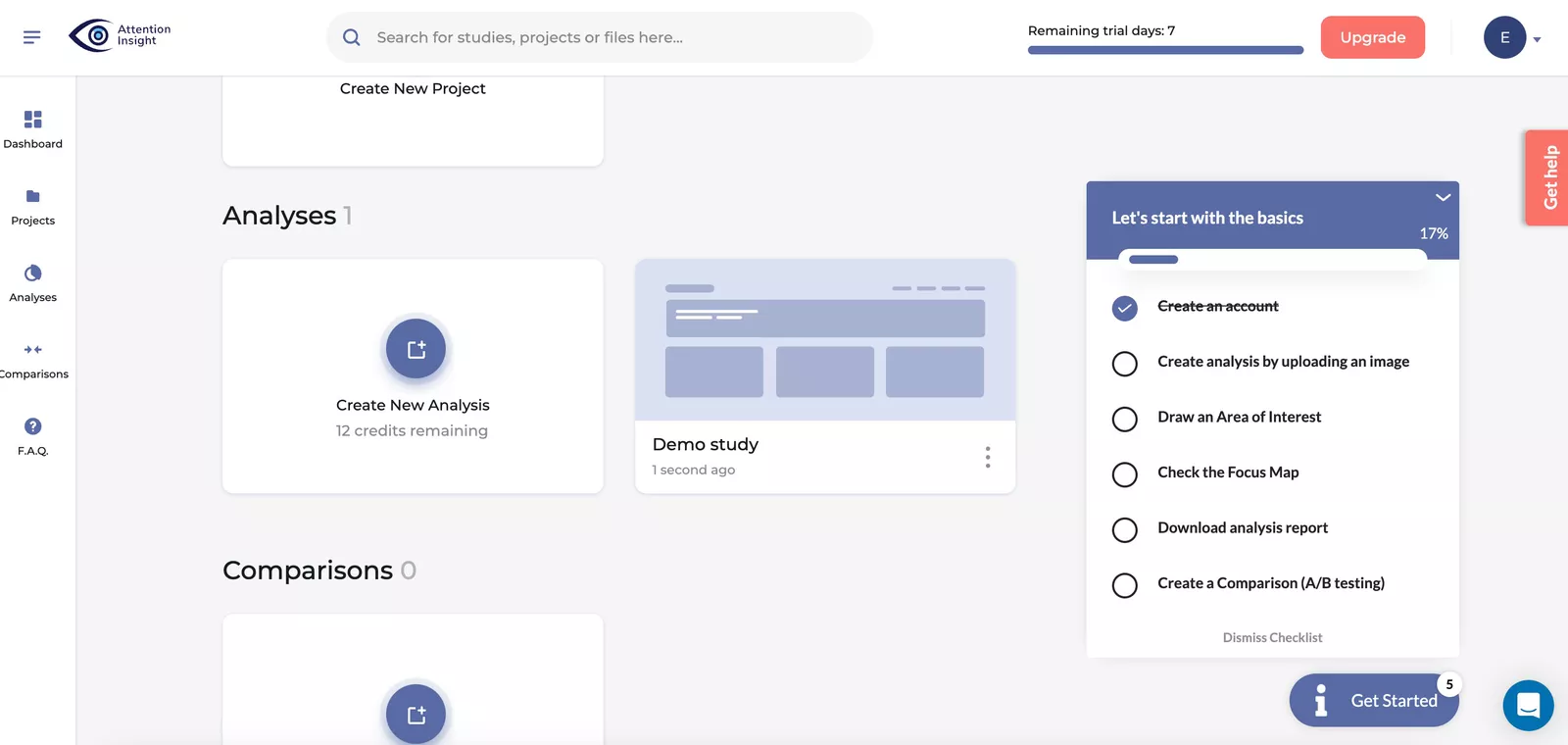
Drive feature adoption with interactive walkthroughs
Use interactive walkthroughs to guide users as they engage with your features for the first time. Use tooltips to highlight features and explain what they do to lower the learning curve.
The checklist prompts users to take action and discover relevant product functionalities to them. The walkthrough then shortens the learning path by showing them how to use a new feature. It removes friction and increases adoption.
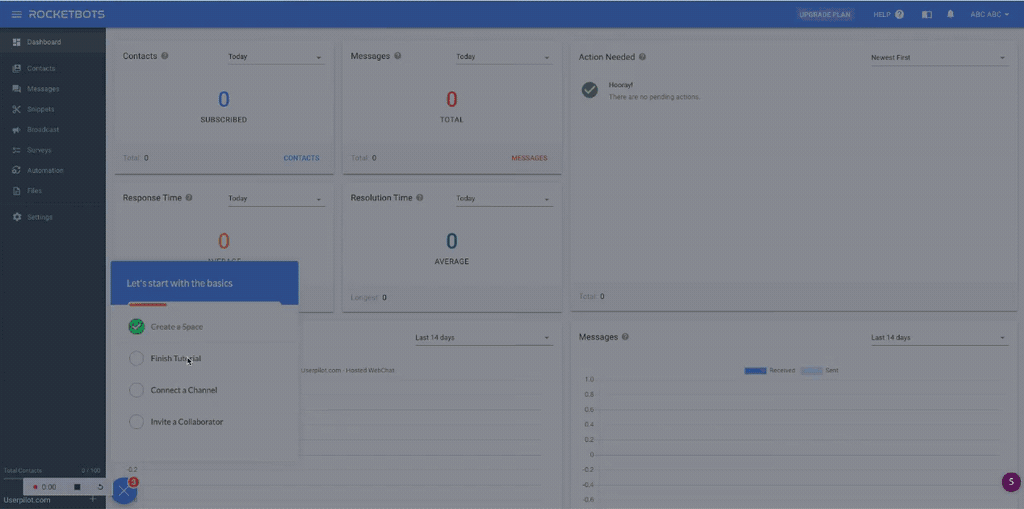
Give freemium users access to premium features
Let your target audience gain firsthand experience of your premium features. This helps motivate them to switch from the free plan to a paid version. Free users can see the value an upgrade might provide.
This is the reverse trial approach many product-led companies adopt. They give access to higher plans, then downgrade users to a free plan if they don’t upgrade after a week or two.
In this example from Loom, users are given access to the Loom AI trial for a few videos. This gives them enough time to experience its value and choose to upgrade to it.
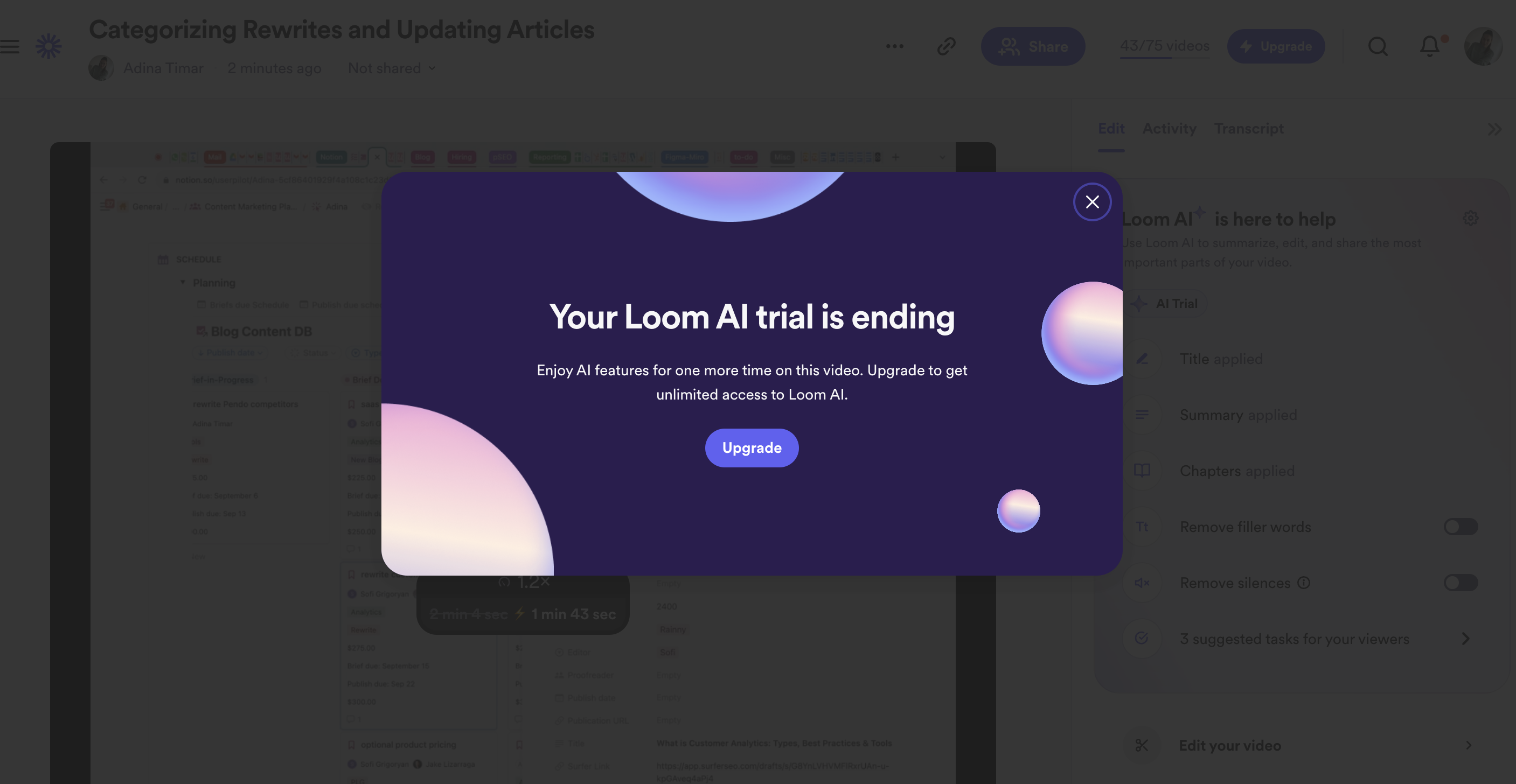
Customer lifecycle management strategies for the retention stage
Here are three strategies to improve the retention stage experience.
Understand what’s driving customer loyalty and replicate
Track product usage, and understand what brings value. A good way to identify them is by identifying features that your power users use regularly. You can do this by tagging your features and monitoring usage against each.
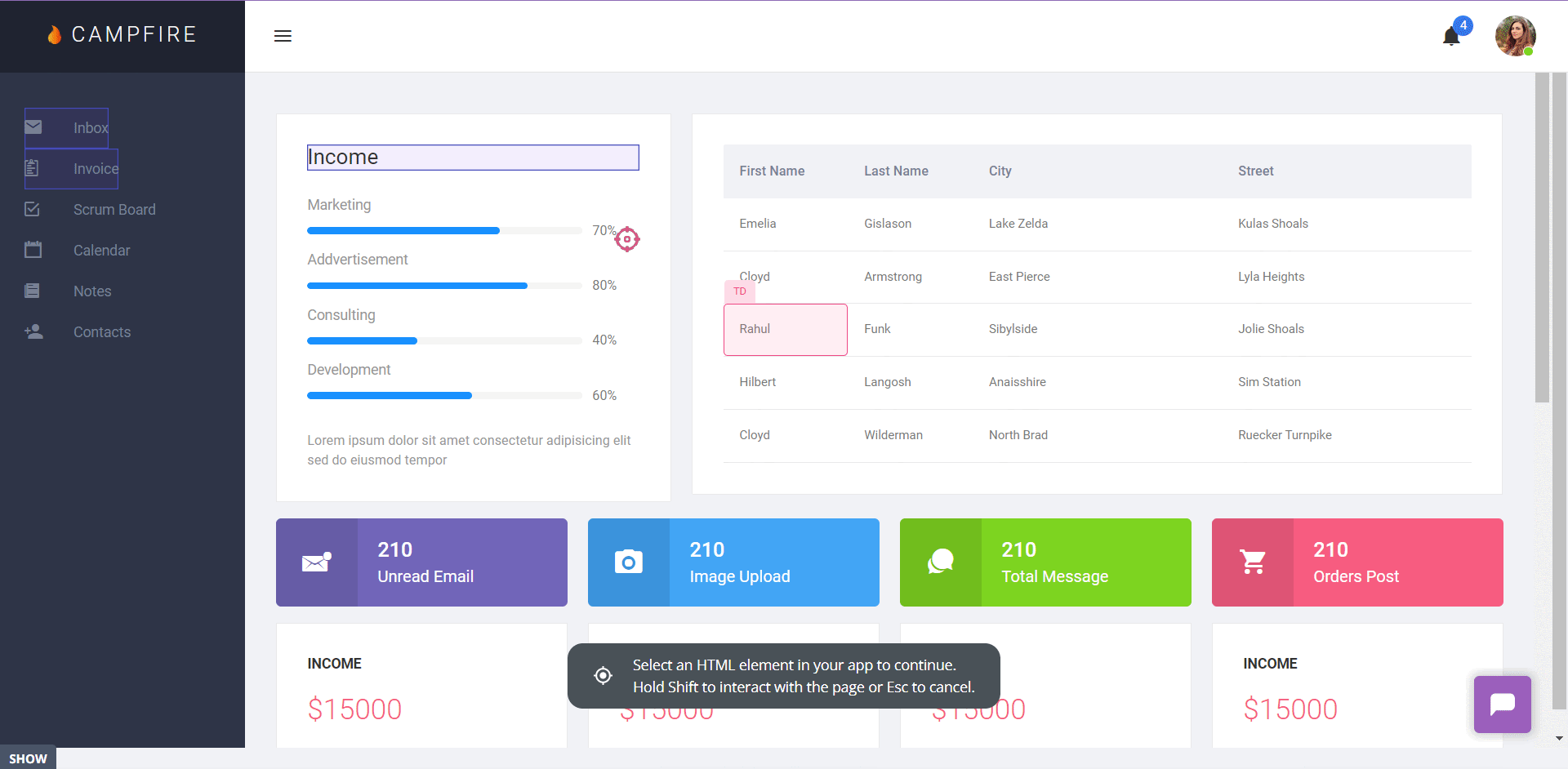
Then, identify the user segments with the same needs that only interacted with part of those features. If they’re underusing critical features, they’ll never achieve the same value as your power users.
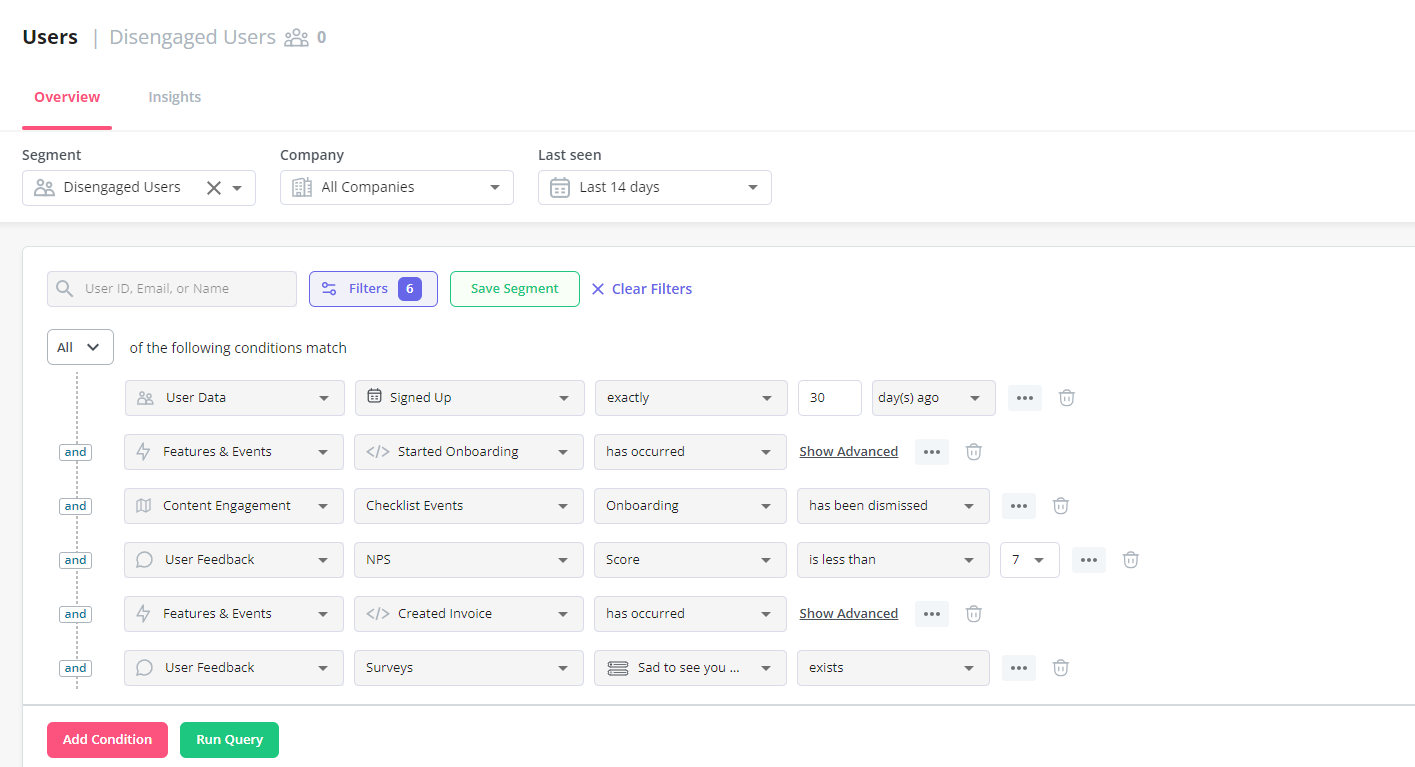
Next, it is important to prompt them to engage with features that will bring them extra value. Trigger in-app UI patterns such as tooltips, modals, and hotspots that encourage them to try out those features.
In this example from Asana, they use an in-app modal to encourage customers to try out their Forms feature (which is likely a high-value feature).
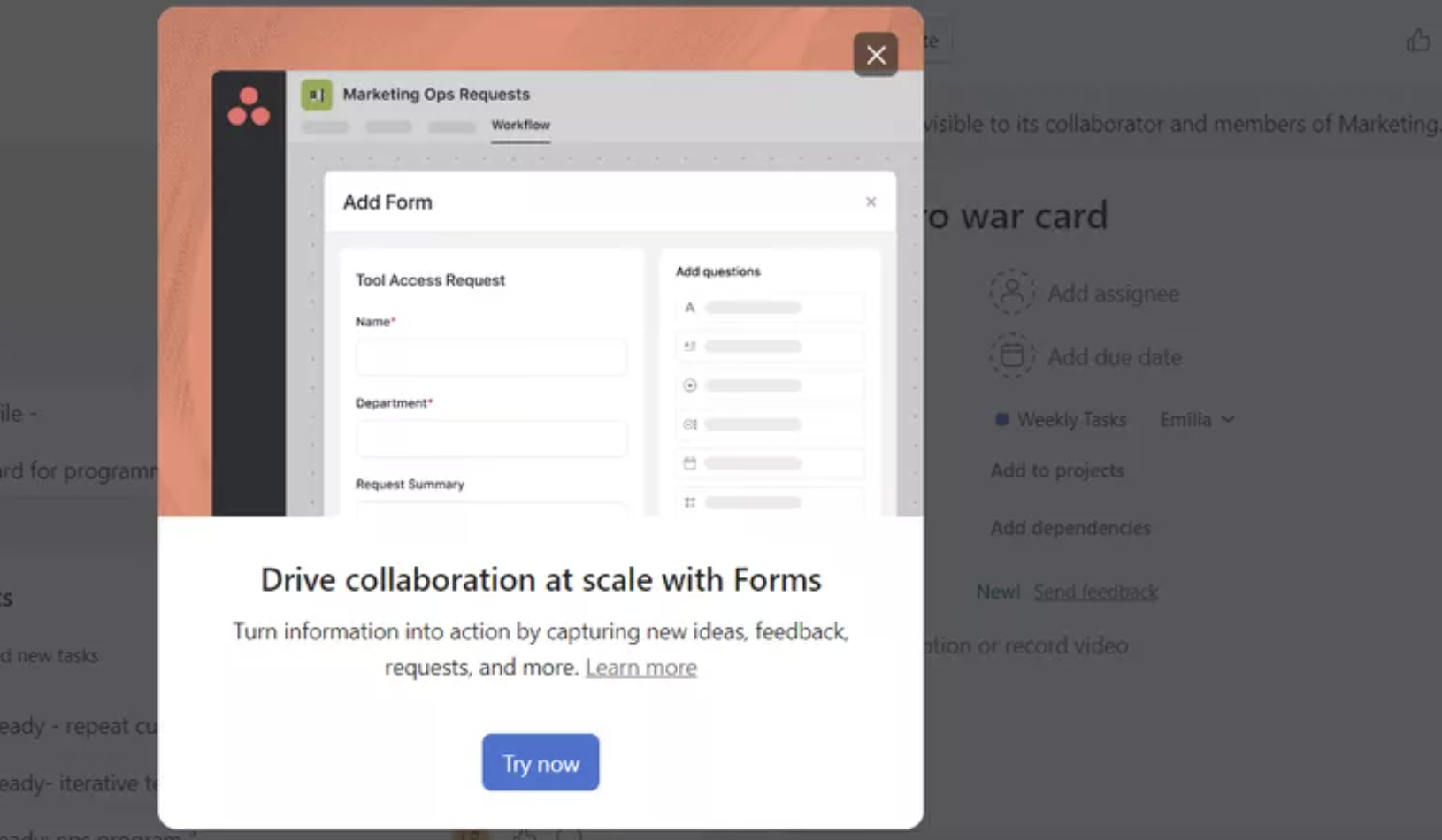
Offer continuous education and support with an in-app resource center
Many customers prefer self-service support as it’s able to provide instant help. Users don’t have to wait in long queues to speak to a customer service agent every time they get stuck.
Userpilot enables you to create a resource center to support and educate users throughout the customer lifecycle.
Offer self-serve resources with an in-app resource center. Enable users to troubleshoot their problems and educate themselves on demand. This reduces friction, keeps their motivation high, and improves satisfaction.
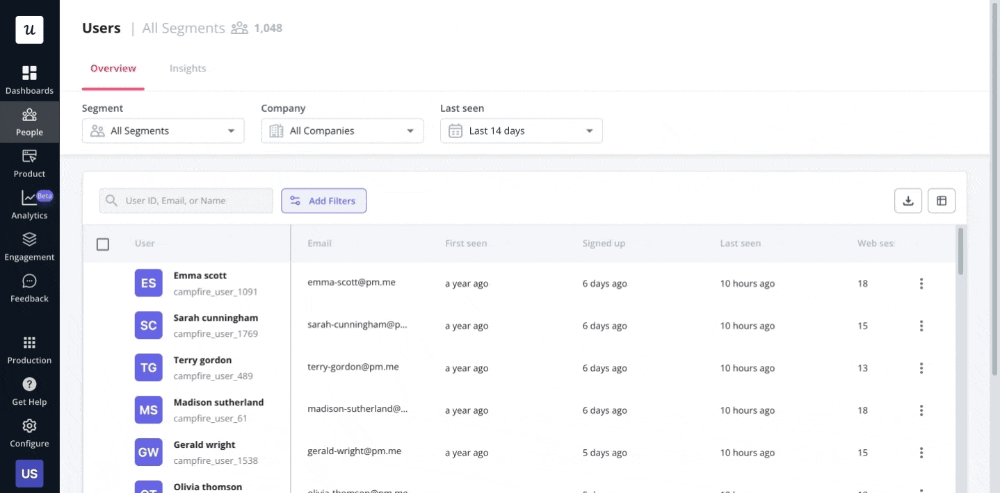
Collect customer feedback and address it
Show customers that you value them by collecting their feedback and acting on it to improve their user experience.
With customer feedback, you can identify bugs and friction points in the customer lifecycle. Resolve them by optimizing the user experience and follow up with customers to close the feedback loop.
NPS surveys are one way to measure user sentiment at this stage of the customer lifecycle. NPS surveys ask customers how likely they are to recommend your product to a friend (indicating satisfaction levels).
Don’t forget to gather qualitative insights with open-ended questions. You’ll get more context around their survey responses, so you can make informed product improvements.
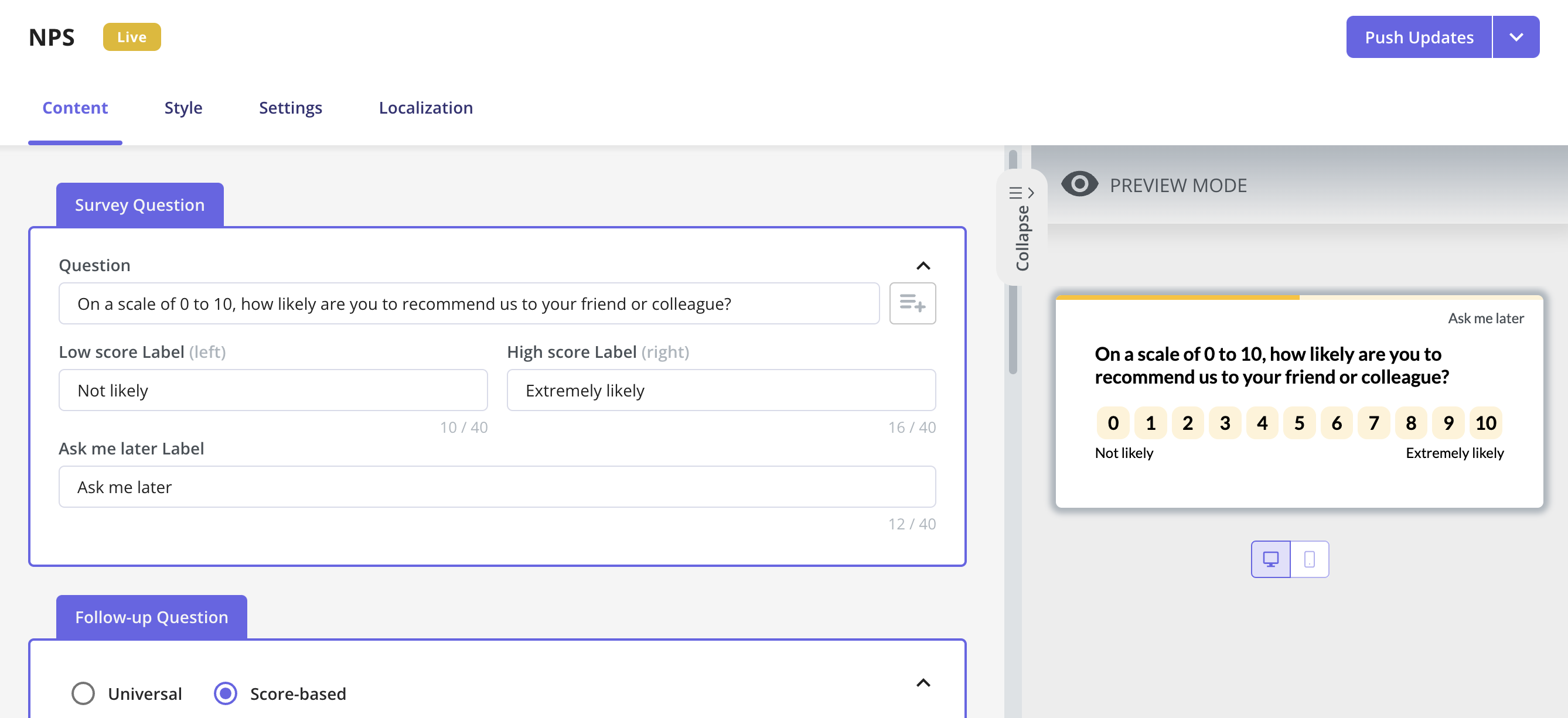
Empower your customer service teams to delight users
Ensure that your customer service teams get ample training and have key resources at hand to address customer issues. They should be able to demonstrate how to maximize your product’s value with advanced features as well.
Additionally, you can consider assigning a dedicated customer success manager for each of your accounts. That way, users know who to reach out to and consequently, build a meaningful relationship with your brand.
Customer experience lifecycle management strategies for the loyalty stage
Want to nurture the relationship you have with current customers? Here are three management strategies for the loyalty stage.
Celebrate customer success
Form emotional bonds with customers by celebrating their success by giving them a mood-lift when they reach an important milestone.
Use the event-triggering feature in Userpilot – once an action of your choice is completed, an automated event is triggered. It can be a gamified celebration modal, certificate, or monetary incentive.
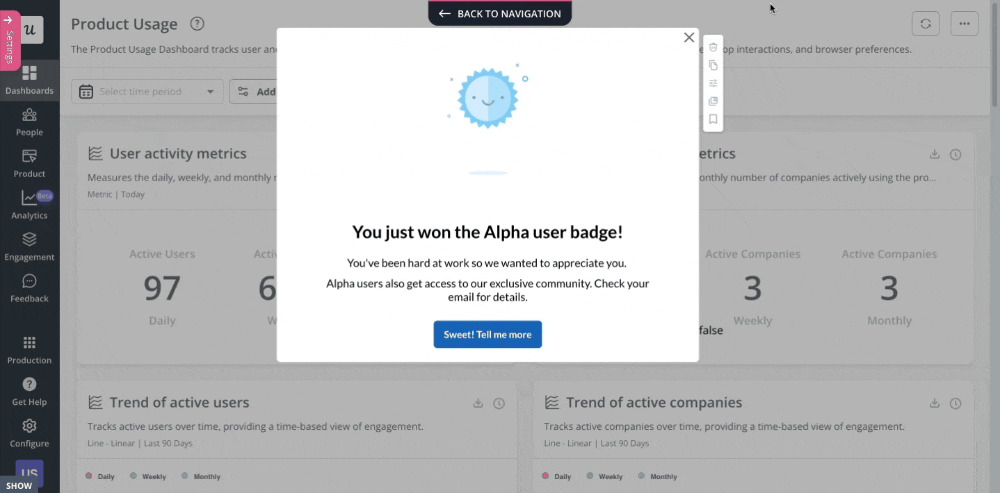
Implement customer loyalty programs
Customer loyalty programs are a great way to incentivize long-term brand-customer relationships.
There are a few different loyalty program formats you can try out.
For example, some companies use point-based loyalty programs where customers get rewarded for purchases or referrals.
Speaking of referrals, that’s a popular loyalty program format used in the SaaS industry. In this example from Dropbox, users get 32 GB of free space if they invite their friends to the app.
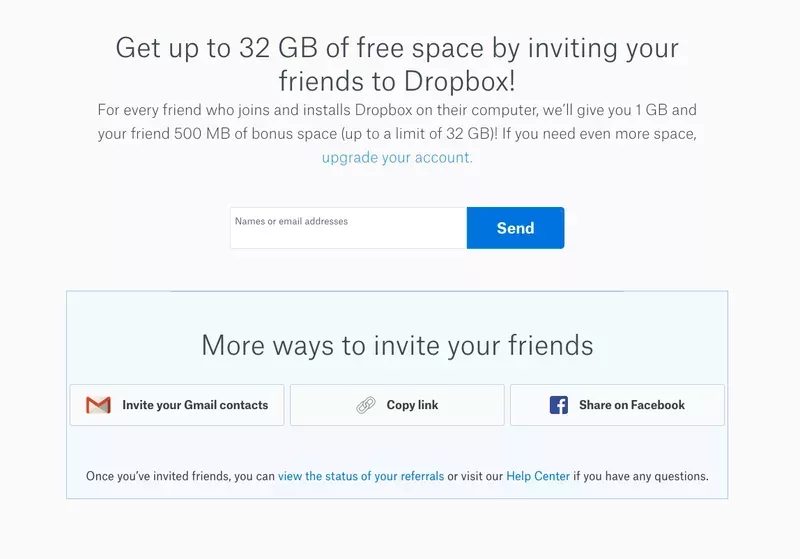
Encourage loyal customers to leave reviews
Ask happy customers to leave reviews on third-party review sites such as G2 or Capterra. They get to share their experience with your brand, while you get new business from the positive social proof.
Instead of individually asking every loyal customer for a review, you can automate this by designing an in-app modal in Userpilot. You can trigger it to show only to the user segments who use and enjoy your product the most.
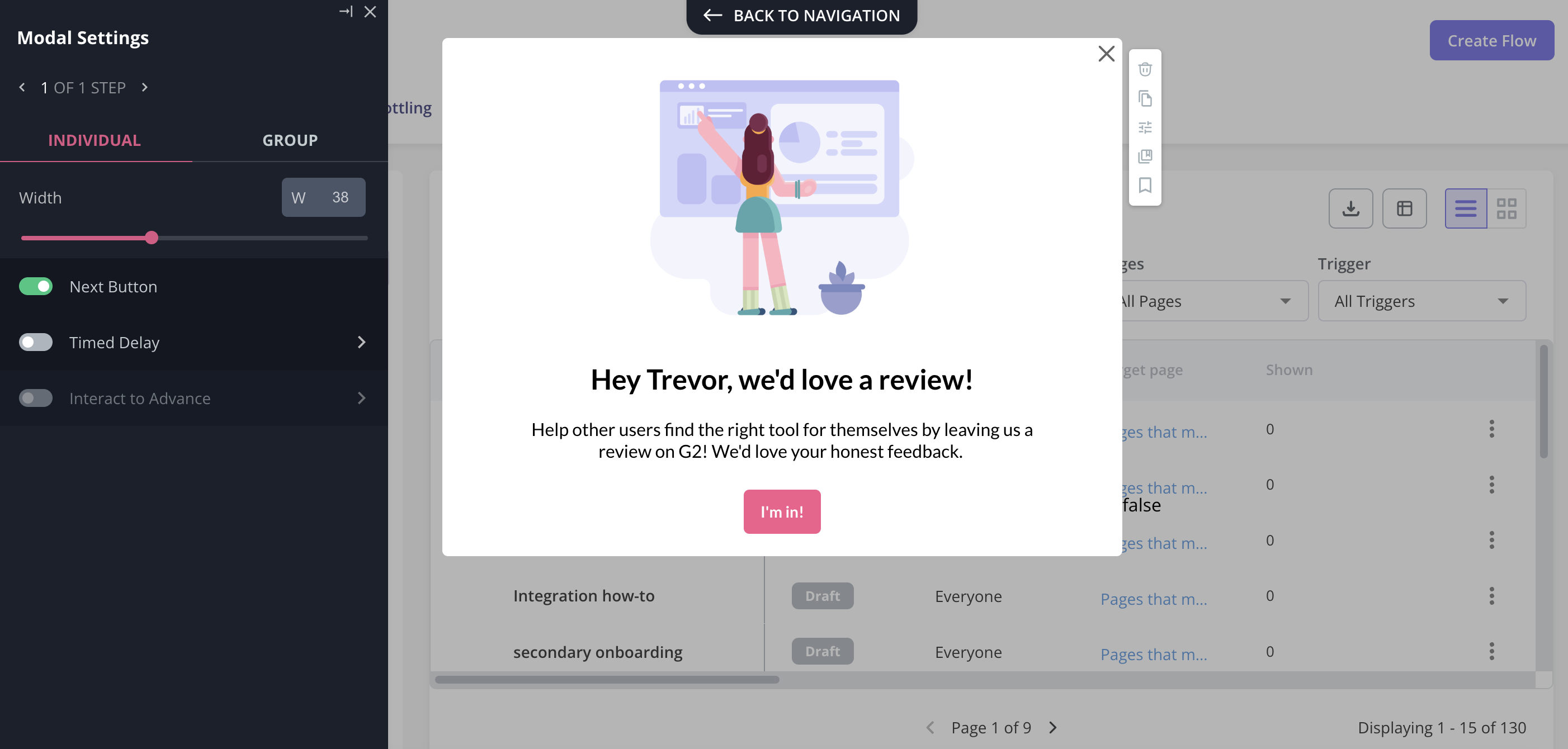
Conclusion
Customers expect a tailored product experience that helps them achieve value. Improving every stage of the customer lifecycle improves satisfaction and contributes to higher revenue.
Want to build interactive and helpful product experiences code-free? Book a Userpilot demo with our team to get started.


